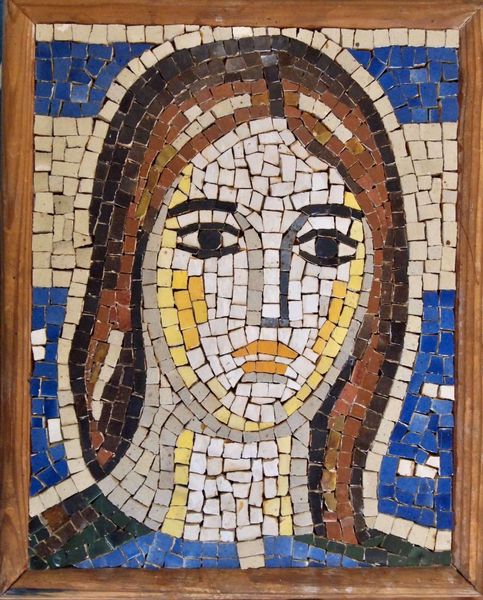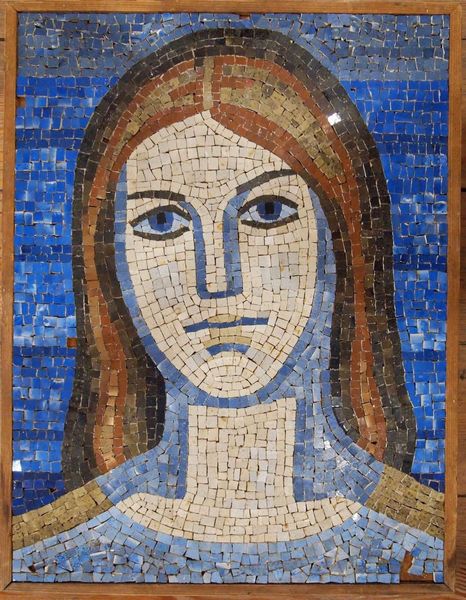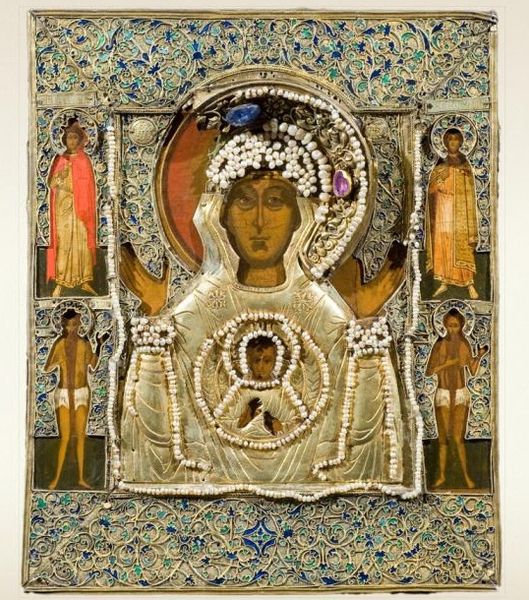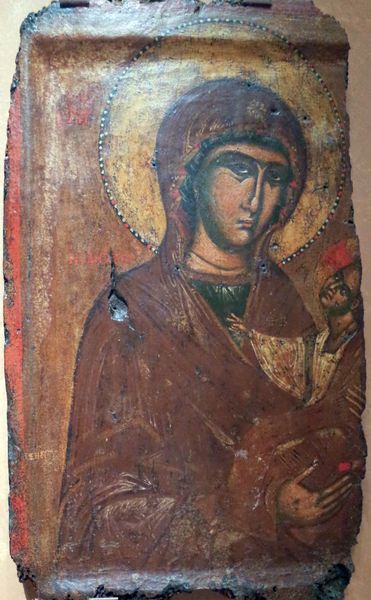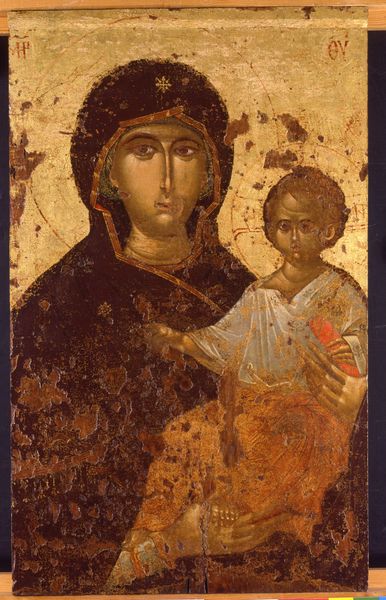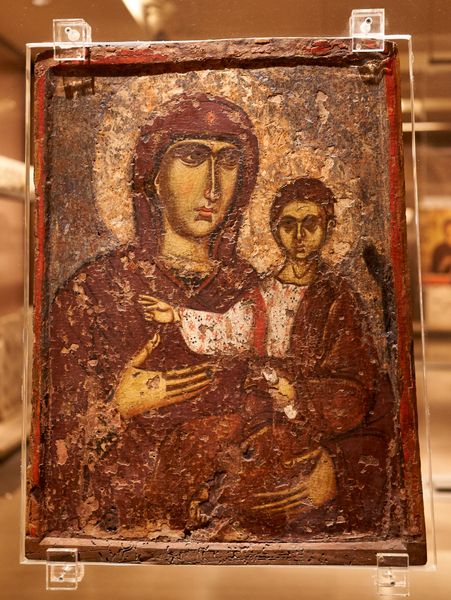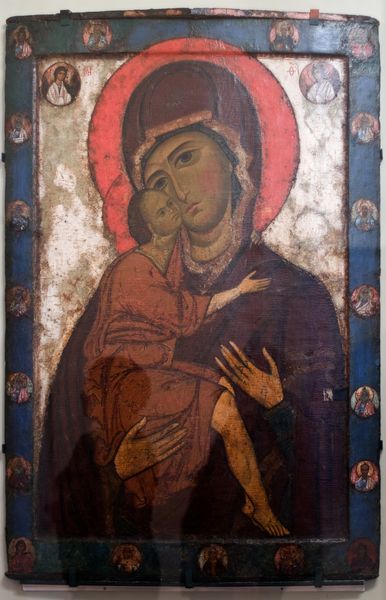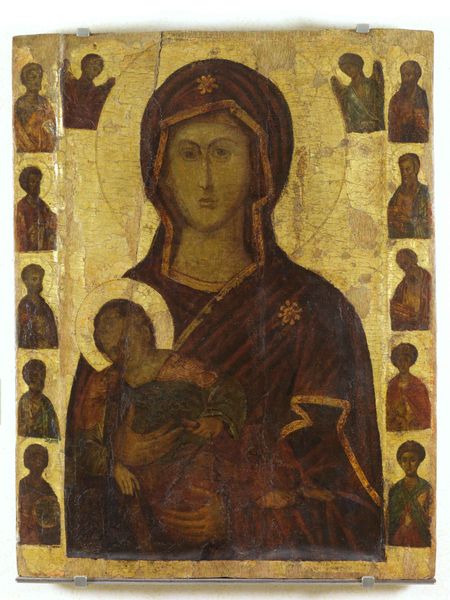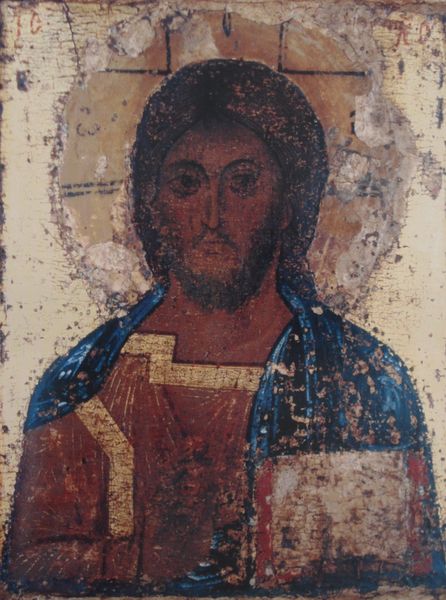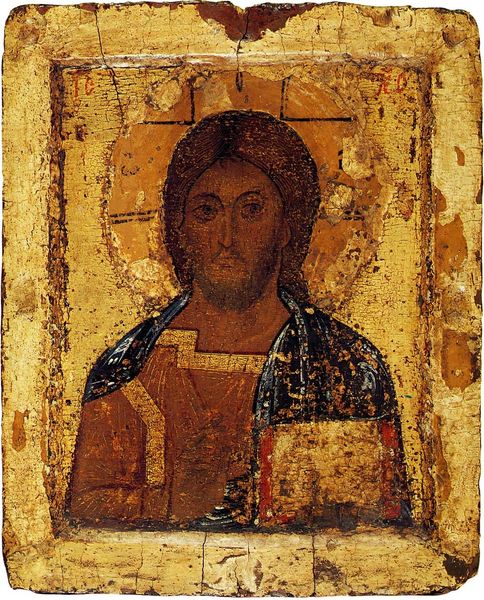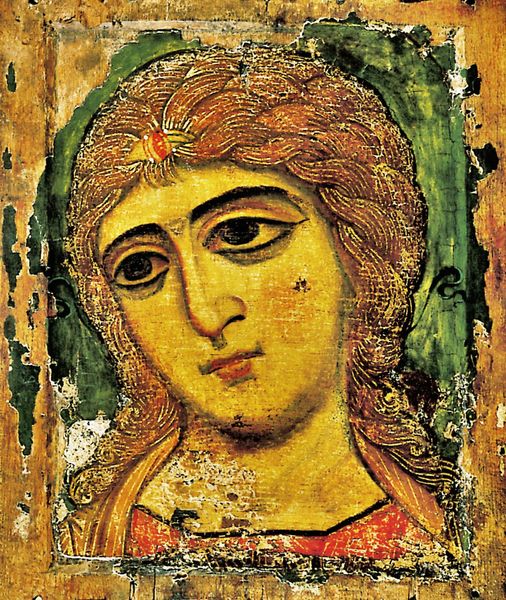
mosaic, mural
#
portrait
#
mosaic
#
byzantine-art
#
figuration
#
mural art
#
oil painting
#
tile art
#
painting art
#
mural
Copyright: Public domain
Curator: Look at this mosaic titled "Saint John" by Mykhailo Boychuk, created around 1910. It's arresting, isn't it? The use of small tiles creates a powerful image. Editor: Absolutely. There's an immediate sense of stillness about it. Even though it’s made of so many individual pieces, it reads as remarkably calm, almost contemplative. Given its historical context, though, I'm drawn to thinking about how it functioned within the Ukrainian artistic and political landscape. Curator: Right. Boychuk and his followers sought to revitalize Ukrainian art by looking to Byzantine traditions, appropriating and reinterpreting those early Christian and folk motifs. Notice the halo. That specific symbolic visual signifier really places this work in a historical and art-historical context for the viewer. Editor: Exactly! But that "return" to tradition wasn't apolitical. It was bound up with asserting Ukrainian cultural identity against Russian and Austrian imperial ambitions. He wasn’t just interested in how religious icons looked but how these forms could carry modern national aspirations. Curator: It’s interesting how those mosaics serve as building blocks for this icon. Those individual tesserae suggest wholeness achieved through piecing together disparate fragments, reflecting a unified visual form out of fragmented elements. Perhaps, speaking politically, one unified identity comprised of many local or regional identities. Editor: And his tragic fate also needs to be considered when approaching his art. He and his circle of artists, known as Boychukists, were executed in the 1930s by the Soviet regime as nationalistic agitators. So, seeing "Saint John" now becomes a memorial to a lost generation of Ukrainian artists silenced under Stalinism. Curator: It reminds us that symbols don’t exist in a vacuum. Their meanings shift through history. What might have been a revivalist aesthetic choice then became, tragically, a dangerous political statement. The image of St. John became the icon of a national movement. Editor: It really reframes our encounter with it. Beyond its formal qualities, the mosaic becomes an enduring symbol of Ukrainian resistance and resilience against oppressive forces. Curator: Precisely, and reflecting on that can help us all appreciate not just the work's inherent beauty, but its complex and vital cultural legacy. Editor: Definitely something to keep in mind while experiencing the power of this striking artwork today.
Comments
No comments
Be the first to comment and join the conversation on the ultimate creative platform.
